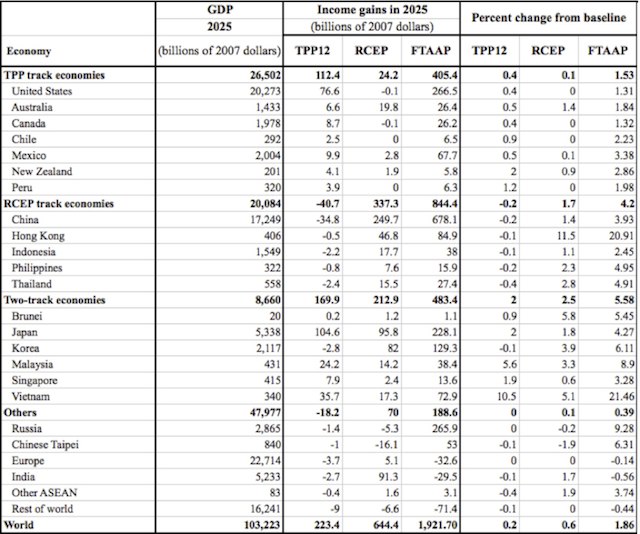Posted on 08/01/2013
US-ASEAN Leaders Meeting held in Phnom Penh, Cambodia in November 2012, President Obama and the 10 leaders of ASEAN agreed to the “U.S.-ASEAN Expanded Economic Engagement” (E3) initiative, a mechanism to expand cooperative work on standards, regulatory practices, and technical barriers to trade. This is aimed at increasing economic integration and trade both within ASEAN and between ASEAN and the US.
While the E3 initiative bears many similarities to the previous US-ASEAN Trade and Investment Framework Agreement (TIFA), the key difference between the two is the higher profile of the government officials involved. As part of the new initiative, a group of ASEAN economic ministers (including for the first time the minister from Myanmar) recently went on a US “roadshow” to promote their respective countries as sources for trade and investment.
Furthermore, in July the US Department of State and USAID launched the ASEAN Connectivity for Trade and Investment (ACTI) program, a new 5-year, US$18-million effort to boost private sector competition within ASEAN, as well as expand ICT connectivity and clean energy technologies.
The E3 Initiative may have marked another step in a closer US-ASEAN economic relationship, yet the real story in Southeast Asian trade is happening elsewhere, in both the US-backed Trans-Pacific Partnership (TPP) and the rival ASEAN-led Regional Comprehensive Economic Partnership (RCEP), which includes China.
The TPP is currently under negotiation by Australia, Canada, Chile, Japan, Mexico, New Zealand, Peru, the United States, and four ASEAN nations, Brunei, Malaysia, Singapore, and Vietnam (Brunei and Singapore are already signatories to the TPP’s precursor, the Trans-Pacific Strategic Economic Partnership). Thailand, Laos, and the Philippines have also expressed an interest in joining.
The US and other negotiating members intend the TPP to be a “high-standards” agreement that binds member-countries closer together by liberalizing their economies along American lines, with the agreement covering not just trade in goods and services but also investment, intellectual property rights, environmental protection, labor, financial services, technical barriers and other regulatory issues.
At the same time, however, ASEAN is pushing for the RCEP, which would include all ASEAN members and the 6 countries with which ASEAN has already signed FTAs: China, India, Japan, South Korea, Australia, and New Zealand.
The RCEP, which began negotiations in December 2012, mostly focuses on liberalizing trade in goods and services and encouraging greater foreign direct investment in ASEAN and its trading partners.
The agreement provides member states with the flexibility to avoid implementing certain trade policies that may hurt local industry (like Chinese State-Owned Enterprises). This would allow ASEAN’s less-developed member states to join but at the cost of a much weaker and less potentially beneficial trade agreement.
Risks for ASEAN
The TPP concluded its 17th round in Lima, Peru on May 20 in which, according to the United States Trade Representative, “The negotiating groups covering services, government procurement, sanitary and phytosanitary standards, trade remedies, labor, and dispute settlement moved their work forward significantly.”
Beyond these negotiations, as well as the ongoing discussions over more contentious issues like intellectual property and environmental standards, the 17th round found the 11 TPP members preparing for the integration of Japan into the group starting with the 18th round, held in July in Kota Kinabalu, Malaysia. Meanwhile, the RCEP finished its first round on May 16 in Brunei, in which members “settled technicalities” in advance of more substantive future talks.
Income Gains Under Alternative Scenarios

Source: The Trans-Pacific Partnership and Asia-Pacific Integration: A Quantitative Assessment byPeter A. Petri, Michael G. Plummer, and Fan Zhai, from scenarios reported at asiapacifictrade.org
These two trade agreements, one that aims to be wide-but-shallow (RCEP), the other narrow-but-deep (TPP), need not be in conflict, and indeed countries like Australia and Singapore have signed on for both.
Yet the preponderance of overlapping and competing free trade agreements in Southeast Asia risks obscuring the role of ASEAN.
The TPP has the potential to include at least 4 and potentially 7 of the 10 ASEAN member-nations, whose economies would presumably become much more closely integrated with each other than with other ASEAN countries. This would give rise to a situation of a split within ASEAN that could potentially weaken its economic coherence as a region.
If ASEAN intends to remain relevant economically as well as politically, it will have to better integrate all of its members, despite member states’ different economic systems and levels of development.
The 2015 ASEAN-wide creation of the ASEAN Economic Community, or AEC, which liberalizes financial services in all ASEAN member countries, should be a good step towards reaffirming the importance and need for greater integration within ASEAN. ASEAN’s more developed member-states should step up to strengthen the capacity of less-developed members so that the gap between them will not be wide.
The US can have a role in ensuring that ASEAN’s less developed member-states can keep up with the economic integration process in the region.
This is where the E3 Initiative can come in. This initiative will not only help strengthen the capacity of ASEAN member-states to engage in trade facilitation, it will also contribute to their preparation in eventually participating in high-standard trade agreements such as the TPP.
The TPP and the RCEP are not mutually exclusive and they need not be so especially for ASEAN.
Proponents of the TPP should allay concerns that it seeks to divide ASEAN; the RCEP, meanwhile, should aim for stricter standards so as to take full advantage of the E3 initiative. These general activities can potentially narrow the gap between the two frameworks for trade in the Asia Pacific.
Evan Roe is an intern at the East-West Center in Washington where Julio Amador III is currently serving as Asia Studies Visiting Fellow. The views expressed here are solely those of the authors and not of any organization with which they are affiliated.



No comments:
Post a Comment